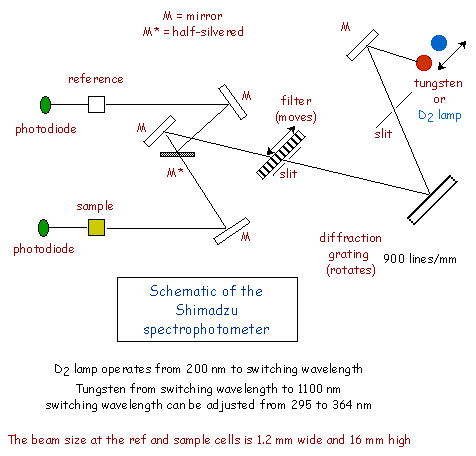Overview:
A spectrophotometer measures the transmission or absorption of liquids or solids as a function of wavelength. The one we will use is made by Shimadzu and uses deuterium and tungsten-halogen lamps and a grating monochrometer. The beam is split into two - one which goes through a reference cell and another which goes through a sample cell. The cells are cuvettes which come in a holder. A schematic and photo are shown here.

 |
The Shimadzu spectrophotometer. The sample is placed in the compartment to the left of the keyboard and the door closed. The transmission spectrum is displayed on the CRT and can also be printed as can the numbers. |
Goal of this Experiment:
The goal of this experiment is to become familiar with the spectrophotometer and to use it to measure the transmission spectrum of several liquids, glasses and plastics.
Suggested Procedures:
Use the spectrometer to measure the transmission spectrum of several of the following:
Print the data and plots. Enter these in your notebook and comment on the shape of the spectra.
Sample Data:
I used the spectrometer to measure the transmission spectrum of several filters as well as a pair of 'blue-blocking' sunglasses. Take a look at the plots.
Questions:
References: